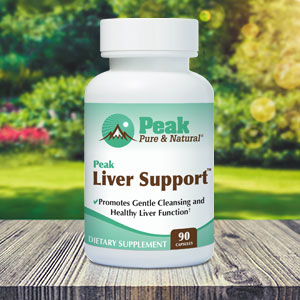Get Easy Health Digest™ in your inbox and don’t miss a thing when you subscribe today. Plus, get the free bonus report, Mother Nature’s Tips, Tricks and Remedies for Cholesterol, Blood Pressure & Blood Sugar as my way of saying welcome to the community!
MRI: The ‘routine’ procedure that could ruin your life

When a doctor orders an MRI, it’s usually to help detect or rule out something potentially life-threatening, or at the very least, something that could make you seriously ill.
But, it’s recently come to light that this rather routine diagnostic test, meant to help you, can have devastating effects on your health.
And, once again, the FDA is taking a “hands-off” policy, waiting until it harms enough people before taking any action to regulate or eliminate its use.
The metal that never leaves your body
Gadolinium is a heavy metal with magnetic properties. It is injected into about one-third of patients getting an MRI, in order to enhance imaging. If your doctor has ever ordered an MRI with “contrast” for you, you were exposed to gadolinium.
But most likely you had no idea you were being injected with a known neurotoxin, capable of inhibiting mitochondrial function (energy production) and causing oxidative stress.
Originally, it was claimed that, because gadolinium is bound to other molecules, the body quickly excretes it through the urine.
Research has proven this to be untrue. At least 1% of each dose may be released from its bound state upon injection and deposited in brain, bone, and other bodily tissue.
For people with kidney disease, this can result in nephrogenic systemic fibrosis, a potentially lethal condition.
For the rest of us, the results can be just as devastating.
Just ask Gena Norris.
Poisoned by MRIs
For famed actor Chuck Norris, the nightmare began in 2013 when his wife, Gena, had three MRIs in one week to evaluate her rheumatoid arthritis…
What followed was a series of mysterious health issues — triggered by the MRIs — that nearly cost Gena her life.
Her gadolinium levels were off the charts. She suffered with symptoms of what we now know as gadolinium deposition disease. Her entire body felt like it was on fire. Her cognitive abilities declined. She couldn’t swallow. Her blood pressure soared.
It took over six months to bring Gena back to something close to normal. Even then, years of treatment were needed to beat back her symptoms.
Europe is taking precautionary measures
This year, the European Medicines Agency’s Pharmacovigilance and Risk Assessment Committee (PRAC) completed a year-long review of the risks of gadolinium when used in MRIs.
As a result, they recommended suspending the marketing authorizations of four gadolinium-based contrasting agents, or GBCAs.
Why?
Because they “found convincing evidence of accumulation of gadolinium in the brain…. many months after the last injection of a gadolinium contrast agent.”
In other words, this toxic metal is not excreted immediately, as was originally intended. Instead, it can remain in your body tissues for months, even years, after an MRI, poisoning you all the while.
The PRAC also found that gadolinium “has been associated with … skin plaques and Nephrogenic Systemic Fibrosis (a skin disease that causes thickening and darkening on large areas of the skin), and that “non-clinical laboratory studies have shown that gadolinium can be harmful to tissues.”
In other words, they chose to take a “better safe than sorry” approach to a possible threat to public health. As their press release states: “…the PRAC took a precautionary approach, noting that data on the long-term effects in the brain are limited.”
Compare this with the FDA’s approach to gadolinium toxicity.
“We’ll study this further”
In 2017, the FDA updated a safety announcement about gadolinium, stating that “retention has not been directly linked to adverse health effects in patients with normal kidney function, and we have concluded that the benefit of all approved GBCAs continues to outweigh any potential risks.
“However, after additional review and consultation with the Medical Imaging Drugs Advisory Committee, we are requiring several actions to alert health care professionals and patients about gadolinium retention after an MRI using a GBCA, and actions that can help minimize problems.”
They claim “the only known adverse health effect related to gadolinium retention is a rare condition called nephrogenic systemic fibrosis (NSF) that occurs in a small subgroup of patients with pre-existing kidney failure. We have also received reports of adverse events involving multiple organ systems in patients with normal kidney function. A causal association between these adverse events and gadolinium retention could not be established.”
So, although they claim not to find enough evidence that the symptoms of gadolinium deposition disease are indeed caused by gadolinium retention, they still want patients to be warned about the risks before having an MRI.
But do you really have much of a choice if you’re about to have GBCAs injected into your body at doctor’s orders?
How to protect yourself
If you have unexplained symptoms that you think may be caused by retained gadolinium from a contrast MRI, you can report it to the FDA by filing a MedWatch Adverse Event Report.
Also, know that you do have a choice. Contrasting agents are not needed or necessary in every MRI. Ask your doctor, the clinic or hospital if you really need one. If so, ask for a ‘stable cyclic’ agent, which can replace linear gadolinium.
Chelation has long been used to help pull heavy metals from the body. As of right now, some healthcare providers recommend chelation therapy while others feel it can’t help enough.
Finally, support groups exist for people with gadolinium toxicity. You may be able to glean some first-hand wisdom from these forums.
Editor’s note: Have you heard of EDTA chelation therapy? It was developed originally to remove lead and other contaminants, including heavy metals, from the body. Its uses now run the gamut from varicose veins to circulation. Click here to discover Chelation: Natural Miracle for Protecting Your Heart and Enhancing Your Health!
Sources:
- Pharma Companies Sued Over MRI Drug — Alliance for Natural Health- USA
- Actor Chuck Norris and Wife Gena Norris Announce Multi-Million Dollar Lawsuit against Pharmaceutical Companies for Dangerous MRI Drug — Business Wire
- Is The FDA Ready To Jump In The Ring With Me? — WND
- Advisory Committee Briefing Document — Medical Imaging Drugs Advisory Committee (MIDAC)
- Greatest Medical Cover-Up And Ponzi Scheme — WND
- European group recommends to stop using 4 linear GBCAs — Gadolinium Toxicity
- Gadolinium Toxicity — Cutter Law P.C.
- Fighting for her Life — Full Measure
- MRIs: FDA Asleep at the Wheel — Alliance for Natural Health- USA
- MRIs: What Your Doctor May Not Warn You About — Alliance for Natural Health- USA
- High Signal Intensity in the Dentate Nucleus and Globus Pallidus on Unenhanced T1-weighted MR Images: Relationship with Increasing Cumulative Dose of a Gadolinium-based Contrast Material — Radiological Society of North America
- Background on Gadolinium — Gadolinium Toxicity
- Questions and Answers on Gadolinium-Based Contrast Agents — U.S. Food and Drug Administration
- Treatment Possibilities for Gadolinium Toxicity — Gadolinium Toxicity
- Study raises questions about the safety of MRI contrast agent; authors call for FDA action — MedInsight Research Institute
- FDA Drug Safety Communication: FDA evaluating the risk of brain deposits with repeated use of gadolinium-based contrast agents for magnetic resonance imaging (MRI) — U.S. Food and Drug Administration
- Systemic Gadolinium Toxicity in Patients With Renal Insufficiency and Renal Failure: Retrospective Analysis of an Initial Experience — Mayo Clinic Proceedings
- Gadolinium deposition in the brain — Magnetic Resonance Imaging
- Gadolinium deposition in the brain: summary of evidence and recommendations — The Lancet
- PRAC concludes assessment of gadolinium agents used in body scans and recommends regulatory actions, including suspension for some marketing authorisations — European Medicines Agency
- Impaired mitochondrial function and oxidative stress in rat cortical neurons: implications for gadolinium-induced neurotoxicity — Neurotoxicology
- Gadolinium-induced oxidative stress triggers endoplasmic reticulum stress in rat cortical neurons — Journal of Neurochemistry
- An overview of gadolinium deposition disease — Applied Radiology
- A Survey of the Chronic Effects of Retained Gadolinium from Contrast MRIs — Gadolinium Toxicity














